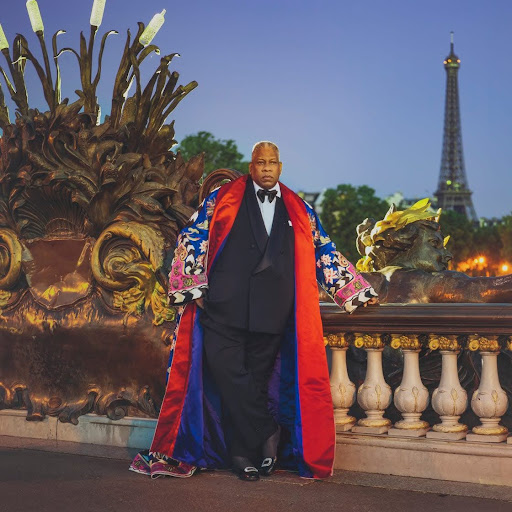
This year’s Met Gala theme is “Superfine: Tailoring Black Style”, a celebration of the Black Dandy. The exhibition is based on the book Slaves to Fashion: Black Dandyism and the Styling of Black Diasporic Identity, written by Monica L. Miller. A dandy is someone who takes dressing well as an art and a lifestyle. If you want examples, think of Andre 3000 in his Outkast days with his colorful suits and statement hats, Little Richard’s expressive stagewear, or the now-disgraced Diddy’s exquisitely tailored suits. The exhibit will explore Black Dandyism from its inception in the Enlightenment to today. However, the gala itself will have its own dress code, to be revealed later.
According to the New York Times this is, “The Met’s first fashion exhibition to focus solely on the work of designers of color… the show is another step in the Costume Institute’s efforts to rectify its own historic failures in diversity and inclusion, said Andrew Bolton, the curator in charge.” It will also, for the first time in decades, focus on menswear. This is a welcome reprieve from the current fashion landscape, which is dominated by white male designers. The luxury conglomerate Kering’s (which means they own multiple high-fashion brands such as Alexander McQueen, Gucci, and Bottega Veneta) roster of designers is entirely white men.
The co-chairs will be all Black men for the first time since the inception of the Met Gala. Rapper A$AP Rocky, producer and Louis Vuitton designer Pharrell Wiliams, Tony-winner Colman Domingo, British race car driver Lewis Hamilton, and LeBron James as honorary co-chair, according to CNN. These men are known for their inventive subversions of menswear while always looking sharp.
This also appears to be an attempt to rectify the sins of Vogue’s past.

Andre Leon Talley was a trailblazer, the first Black editor and chief at American Vogue, a fashion icon, champion of diversity (he gave valuable opportunities to nonwhite designers, models, and photographers), and the ultimate dandy with his iconic capes and kaftans. But in his memoir, The Chiffon Trenches, he alleges mistreatment by both Anna Wintour (longstanding editor-in-chief of Vogue) and by the fashion industry at large. He may have never been paid as much as his co-workers (in respect or money). However, his legacy lies in the Black editors (including the first Black editor-in-chief of British Vogue, Edward Enninful), models (he championed more diverse runways, and was a mentor to Naomi Campbell), journalists (including Robin Givhan, the first fashion writer to win a Pulitzer), and opened the doors for other diverse voices to make fashion a more representative and beautiful place.
There was the infamous March 2008 Vogue cover where LeBron James, (the first Black man to appear on the cover in its then 116-year history) was the cover star. However, his cover was not a cause for celebration. Instead, many found the picture racist. The cover was of LeBron James, not dressed in high fashion, but in shorts and a tank top, body hunched, seemingly grabbing the supermodel Gisele. Critics found a similarity between this image and the 1887 Gorilla Carrying off a Woman statue by Emmanuel Fremiet, and the King Kong movie (in this interpretation, Gisele is the damsel in distress; James is the monster causing her distress). The photographer, Annie Leibovitz, has been often criticized for shooting Black women in poor lighting, according to Vox.
This track record grew even more concerning when the first Black photographer (Tyler Mitchell) to ever shoot the cover of American Vogue was just in 2018, six years ago. It’s made even more dire by the fact that Mitchell’s hiring was a personal request by Beyoncé, the cover star.
But even when not platformed by institutions such as Vogue, Black dandies have been carving out spaces for themselves. According to the Washington Post, the origins of the Black dandy started during enslavement, when enslaved people would be dressed in fine clothing so they could visually enforce the wealth of their enslavers. But Black Dandyism has existed as long as Black men and consumerism have existed.
For example, legendary crossdresser Gladys Betley dressed in men’s suits and hats during the Harlem Renaissance, playing at clubs. She gained popularity quickly for her gender-bending style, pushing boundaries, and dressing better than even the men who came to see her.
Black designers have often re-mixed historical or mainstream fashion, a subject in which Dapper Dan is a pioneer. He was a tailor who owned a store in Harlem that sold clothes that re-purposed other designer’s material (like Louis Vuitton logos). He was one of the first to venture into logomania, the visible inclusion of logos on a garment or accessories. Though the trend has been derided ever since its inception, brands like Gucci, Balenciaga, and Dior are all using logomania right now. The more powerful brands essentially forced Dapper Dan to shut down his store (some of these brands have since embraced logomania).
Black Dandies were focused on transforming themselves and creating an identity, a visual way to counteract stereotypes about what it means to be a Black man. As Talley said, “Fashion can be an emotional experience.” Black Dandies focused on fashion as self-expression without conforming.
As always, the Met Gala will take place on the first of May next year. The dress code normally doesn’t come until closer to the actual gala. Watch the Vogue live stream and see your favorite celebrities show up and show out. Look for sharp tailoring, plays on suits, and references from Black history (like Harlem Renaissance-inspired fits to contemporary Black designers like the late Virgil Abloh).


